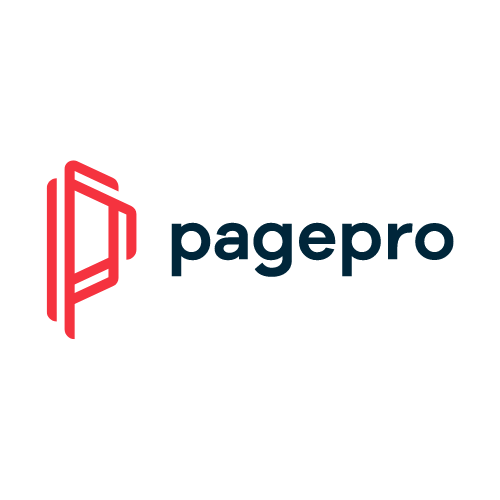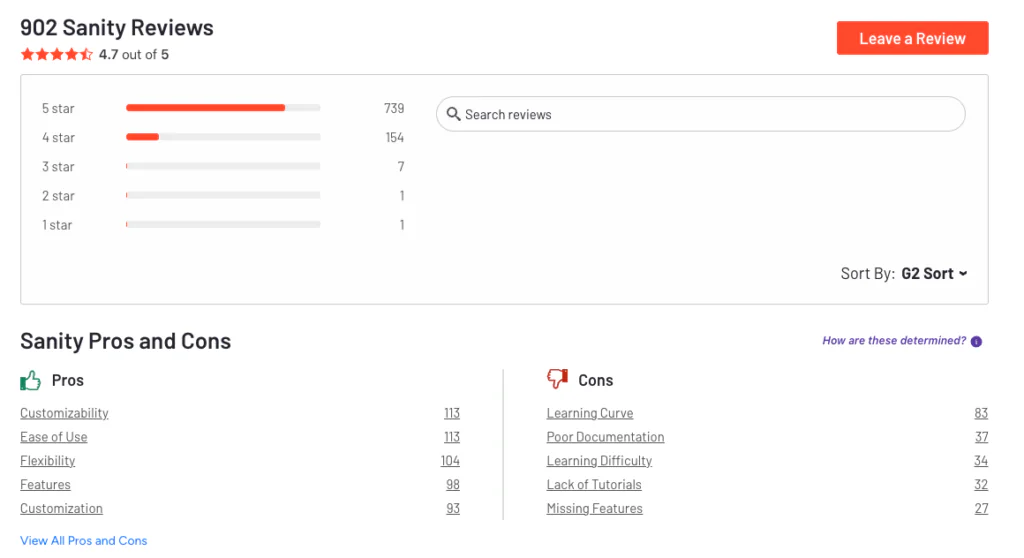Headless CMS Guide: Sanity vs Contentful
 Pagepro
Pagepro
How to Pick the Right CMS in 2025?
When it comes to content solutions, two of the most popular picks in 2025 are Sanity vs Contentful. Both are headless, API-driven platforms, but they differ in flexibility, pricing, and how much control they give you.
Picking the right CMS solution starts with knowing your team’s needs. There is a difference in how developers want to work and the kind of editing experience content teams expect. At the same time, you have to consider how the future platform might scale with your website, if it’s within the budget.. The list goes on.
For those trying to choose between Contentful and Sanity, we’ve prepared a quick comparison of both. Let’s find out which is the better choice for you.
Features of Contentful vs Sanity
| Feature | Sanity | Contentful |
| Type | Content Operating System offering schema-as-code flexibility and real-time content collaboration. | A headless CMS with a structured, UI-first approach. |
| G2 Rating | 4.7/5 | 4.2/5 |
| Developer Experience | Sequential editorial workflows with a clear structure. | Models created via UI or migration scripts. Less flexibility but faster setup for non-technical teams. |
| Collaborative Editing | Real-time edits and live updates. | Studio is fully customizable via React and the structure builder. |
| Querying & API | GROQ (proprietary and highly flexible) plus REST and GraphQL. | Supports REST and GraphQL. |
| Customization & UI | Studio is fully customizable via React and structure builder. | Limited UI customization. Offers an App Framework. |
| Performance | Optimized for low-latency, real-time updates. Uses distributed Content Lake, with optional CDN layer. | Contentful offers enterprise-grade performance with global CDN, 99.99% uptime SLA, handles massive API volumes. |
| Ecosystem | Open-source ecosystem with strong developer engagement. | Marketplace with a large partner network and extensive integrations. |
| Pricing Model | Sanity offers usage-based pricing, flexible for smaller projects. | Fixed-tier pricing that may become costly with scale. |
| Best For | Developer-led teams seeking flexibility, real-time content workflows, and custom UIs. | Teams needing structure, enterprise governance, and predictable scaling. |
| Use Cases | PUMA, Morning Brew, Cloudflare | KFC, BMW, Notion |
Have questions about Headless CMS Solutions? Ask our experts.
Sanity: Content Operating System
As a Content Operating System, Sanity gives developers complete control over how content is structured, edited, and delivered. Unlike CMSs with rigid, UI-driven models, Sanity stores content as structured data defined entirely in code. The content model can evolve alongside the product without fighting platform limitations, and it works seamlessly with frontend solutions like Next.js.
Many frontend developers like that Sanity’s schema-as-code fits right into their version control workflow, so content model changes are tracked and reviewed just like any other part of the codebase.
Rafał Dąbrowski, Pagepro Developer
Sanity is a leader in the headless CMS industry. It’s aimed at teams that want real-time collaboration and the ability to tailor the editing environment to their needs.
Watch our video to learn more about Sanity:
Sanity Core Features
Schema-as-code, which lets you define your entire content structure in JavaScript or TypeScript.
Sanity Studio, a highly customizable, open-source editing environment built with React.
Real-time editing for multiple users. They can edit the same document simultaneously, with changes synced instantly.
Content Lake, a cloud-hosted datastore that delivers content updates in milliseconds.
GROQ query language with a powerful, flexible syntax for fetching exactly the data you need.
Build or install plugins for workflows, integrations, and custom field types.
Built-in image CDN with automatic transformations and optimization.

Sanity on G2
The Pros of Sanity
Flexibility
Because the schema is defined in code, developers can model and manage content exactly as they need it without working around a UI’s constraints.
Real-Time Collaboration
Editors see changes instantly, making it easier to work without overwriting.
Fully Customizable Studio
You can adapt the editing interface to match the project’s needs and add custom input components.
Version Control for Content Models
Since schemas live in your codebase, they can be tracked, reviewed, and deployed like any other part of the application.
Performance
Content Lake delivers low-latency data and supports live updates to the front end.
Plugin Ecosystem
Growing library of official and community plugins for analytics, localization, e-commerce, and workflow enhancements.
Generous Free Tier
Suitable for prototypes or small sites before scaling up to paid usage.

The Cons of Sanity
Steeper Setup for Non-Developers
Without a developer to define schemas, the content platform has no ready-to-use structure.
Learning Curve for GROQ
While powerful, Sanity’s proprietary query language **isn’t as widely known as GraphQL, so teams need time to get up to speed.
Usage-Based Pricing
Sanity costs can spike if you have high traffic, many API requests, or large amounts of stored data.
Fewer Turnkey Integrations
While the plugin ecosystem is growing, it’s smaller than Contentful’s established marketplace.
What is Sanity.io Used For?

Source: Sanity
Sanity is widely used for projects where content complexity and flexibility are essential:
Multi-platform content delivery to push content to websites, apps, and in-store displays from a single source.
Custom editorial workflows and matching a brand’s content process.
Sites that need collaborative publishing, live dashboards, or apps where content changes need to appear instantly.
Design- and content-rich sites that need a CMS to adapt to unique layouts or structures.
Well-known brands like PUMA, Morning Brew and Cloudflare have used Sanity for projects that require both creative freedom and scalable performance.
Sanity Development for UK’s Top Insurance Company - READ CASE STUDY
Contentful: Headless CMS
Contentful is a cloud-native, API-first headless CMS, sometimes referred to as a “composable content platform”. It decouples content storage from presentation, offering content as JSON data via REST or GraphQL APIs.
This architecture makes it flexible and channel-agnostic, ideal for modern omnichannel publishing.
Contentful Core Features
API-first architecture with REST and GraphQL endpoints for content delivery.
Structured content modelling for defining content types, fields, and relationships.
Role-based permissions for editorial governance.
Content versioning with history and rollback.
App Framework and Marketplace for integrations with analytics, e-commerce, translation, and marketing tools.
Global CDN for fast content delivery worldwide.

Contentful on G2
The Pros of Contentful
Contentful has become a go-to choice for many enterprises because it blends the stability of a mature platform with the flexibility of a headless setup. Its features are built to support large teams and high-traffic projects.
Reliability
Contentful is known for uptime and stability, backed by SLAs and global CDN infrastructure.
Predictable Workflows
A structured, UI-driven content model is easy for non-technical editors and marketers to follow, reducing errors in large teams.
Integrated Ecosystem
The App Marketplace and strong partner network make it straightforward to connect with third-party services.
Omnichannel
The API-first approach lets you push the same content to multiple platforms easily.

The Cons of Contentful
Contentful is a great option if you’re looking for reliability and governance, but it has some significant trade-offs:
Rigid Content Modelling
The structured approach is great for governance but can feel inflexible when requirements change. For example, introducing a new nested relationship or restructuring content types often requires multiple migration scripts and extensive testing.
Limited Previews
Out of the box, Contentful doesn’t offer a true real-time preview. Editors may need to publish or set up complex preview environments to see how changes look, which slows feedback loops.
Workflow Gaps
There’s no built-in real-time collaborative editing (like Google Docs or Sanity’s live editing). Two people editing the same entry risk overwriting each other’s changes.
API Rate Limits
Build processes, especially in static site generators or large migrations, can hit rate limits. On busy projects, this can cause delays unless you move to a higher-cost plan.
High Scaling Costs
Contentful pricing is tiered by users, locales, and content types. A project might start affordably but become expensive as you add editorial staff, expand into multiple regions, or store more entries.
Learning Curve
While editors can pick up the UI quickly, developers must learn Contentful’s specific APIs, content modelling patterns, and migration tooling, which adds onboarding time.
Which Companies Use Contentful?

Source: Contentful
Contentful is often chosen for projects where structured governance, scalability, and predictable workflows are more important than extreme flexibility. Examples include:
Enterprise-scale websites that need strict content structures and localization.
Multi-channel publishing to deliver consistent content across websites, mobile apps, kiosks, and other digital touchpoints.
Marketing and campaign sites where content needs to be updated quickly without involving developers.
Global brand platforms maintain brand consistency across regions with role-based permissions and approval workflows.
High-profile organisations, like KFC, BMW, and Notion, rely on Contentful for enterprise-scale and multi-platform content delivery. However, many teams are migrating from Contentful due to its high costs and rigid architecture.
What is the Difference Between Contentful and Sanity?
Both Contentful and Sanity are API-first, headless platforms. However, they approach content management very differently.
Contentful takes a UI-first, structured approach. You model content types within its dashboard, define fields through the interface, and let non-technical editors work within a predictable, governed environment. This way, onboarding is much easier for large teams and helps to keep content consistent across regions and channels.
Sanity, on the other hand, is schema-as-code from the ground up. Content models live in the codebase, so developers have complete control over the structure. Studio editing environment in Sanity is open-source and fully configurable. The real-time collaboration feature means multiple editors can work on the same content simultaneously without conflicts.
The result is that Contentful often appeals to enterprises that need predictability and a ready-made editorial interface. Sanity is well-liked by developer and editorial teams looking for flexibility.
Sanity vs Contentful Pricing
What’s the Cost of Sanity?

Sanity Pricing as of August 2025
Paid Plans in Sanity
Growth: $15/seat/month
Up to 50 seats
5 roles
Private/public datasets
Comments, tasks, and content releases
AI Assist features
Higher limits for API requests, bandwidth, and assets (overages billed separately)
Enterprise: Custom pricing
Unlimited seats
Advanced access control and governance
SSO, SLAs, dedicated support, onboarding, and training
Media library add-ons and extended retention options
Is Sanity Free?
Yes, Sanity has a free tier. It includes full access to the Studio, schema-as-code modeling, and real-time features:
Up to 20 user seats
2 roles
2 datasets (public)
Unlimited content types/locales
Real-time collaboration
Basic compute, API, and asset limits
It’s generous enough for prototypes, internal tools, or small sites before upgrading to Growth or Enterprise.
How Much Does Contentful Cost?

Contentful Pricing as of August 2025
Contentful uses a tiered pricing model with clear limits at each level.
Paid Tiers in Contentful
Lite: $300/Month
20 users, 3 roles, 3 locales
1M API calls/month
100 GB/month CDN bandwidth
Comments & task management
Scheduled publishing
Live collaboration
1 Starter Space (with option to add 1 Lite Space)
Premium: Custom pricing
Everything in Lite, and a few more features:
Custom users, roles, and locales
Unlimited API calls/month
Custom CDN bandwidth
Enhanced governance, compliance, and security
Up to 99.99% uptime SLA
Dedicated customer success and 24/7 support
Unlimited Spaces and advanced features (e.g., Personalization, Studio, AI Actions)
Is There a Free Version of Contentful?
Yes. Contentful’s free plan is suitable for learning, prototyping, or very small sites. Most production projects with multiple locales, higher traffic, or more complex workflows will need to move to Lite or Premium. It includes:
10 users, 2 roles, 2 locales
100K API calls/month
50 GB/month CDN bandwidth
Structured content, developer tools, and editorial experience
1 Starter Space
Pricing Comparison Table
| Plan | Sanity | Contentful |
| Free | – 20 seats |
– 2 roles
– 2 public datasets
– Unlimited content types/locales
– Real-time collaboration | – 10 users
– 2 roles
– 2 locales100K API calls/mo
– 50 GB CDN
– 1 Starter Space |
| Mid-Tier | – $15/seat/mo
– Up to 50 seats
– 5 roles
– Private/public datasets
– Comments
– Tasks
– Content releases
– AI Assist
– Usage-based overages | – $300/mo
– 20 users
– 3 roles
– 3 locales
– 1M API calls/mo
– 100 GB CDN
– Comments
– Scheduled publishing
– Live collaboration |
| Enterprise | – Custom pricing
– Unlimited seats
– Advanced access control SSO
– SLAs
– Dedicated onboarding/support
– Media library add-ons | – Custom pricing
– Unlimited API calls
– Custom bandwidth
– Unlimited Spaces
– Advanced governance
– 24/7 support
– Up to 99.99% SLA |
| Pricing Model | Seat-based pricing + usage-based add-ons | Fixed-tier pricing with defined limits |
| Best For | Flexible scaling, custom workflows, collaborative editing | Predictable budgets, strict governance, enterprise-scale delivery |
Pricing as of August 2025
Sanity vs Contentful: Choosing the Right Option
Both Sanity and Contentful are capable, modern platforms; the better choice comes down to your team’s needs.
Pick Sanity if…
Full control over content structure through schema-as-code is important.
Real-time collaboration between editors is a core requirement.
A fully customizable editing environment is needed to match unique workflows.
Flexible, usage-based pricing is preferred for smaller projects with room to scale.
The content model is complex or expected to change frequently.
Choose Contentful if…
A ready-to-use, structured editorial environment will speed up adoption for non-technical users.
Predictable pricing and defined limits outweigh the need for deep customization.
Large, distributed teams rely on strict governance, roles, and approval workflows.
Enterprise-grade reliability, global content delivery, and strong SLAs are top priorities.
A wide ecosystem of integrations and proven enterprise deployments is essential.
In short, Sanity shines when flexibility, customization, and live collaboration matter most, while Contentful excels in structured governance, predictable workflows, and enterprise scalability.
Did you choose Sanity over Contentful? Our development team can design, customize, and launch a solution tailored to your needs. Learn more about our Sanity development services.
Sanity vs Contetnful FAQ
What Kind of CMS is Contentful?
Contentful is a headless CMS. It stores content in a structured way and delivers it through APIs, allowing developers to use any technology to display that content on websites, apps, or other digital platforms.
Which CMS is Better, Sanity or Contentful?
Sanity is ideal for developer-led projects that need flexibility, real-time collaboration, and a fully customizable editing experience. Contentful works best for larger teams that value a ready-to-use interface, structured governance, and predictable pricing. Both are powerful headless CMS platforms, but the right one for you comes down to workflow preferences, budget, and long-term scalability.
What is a Headless CMS?
A headless CMS separates the content management back end from the front-end presentation. Content is created and stored in the CMS, then delivered via an API to any channel.
Is Sanity a CMS?
Sanity is a Content Operating System. It offers more customization, real-time collaboration, and schema-as-code content modeling than traditional CMS options.
What’s the Difference Between Headless CMS and Content Operating System?
A headless CMS solution focuses on storing and delivering content via APIs. A Content Operating System, like Sanity, does that too, but adds deeper customization, real-time collaboration, and the ability to fully control the content model and editing environment.
Is Sanity CMS Open-Source?
Sanity Studio, the editing interface, is open source and can be customized or extended by developers. The hosted Content Lake (where your content is stored and delivered) is not open source.
Why is Contentful So Expensive?
Contentful can become costly because pricing increases with the number of users, locales, API calls, and content spaces. Enterprise plans also include advanced features, SLAs, and dedicated support, which add to the price.
Read More
Subscribe to my newsletter
Read articles from Pagepro directly inside your inbox. Subscribe to the newsletter, and don't miss out.
Written by

Pagepro
Pagepro
Next.js, Expo & Sanity developers for hire! At Pagepro, we take over the technical duties by providing Next.js, Expo & Sanity development teams, so you can focus on the strategic goals of your business, and stop worrying about the delivery so much.
